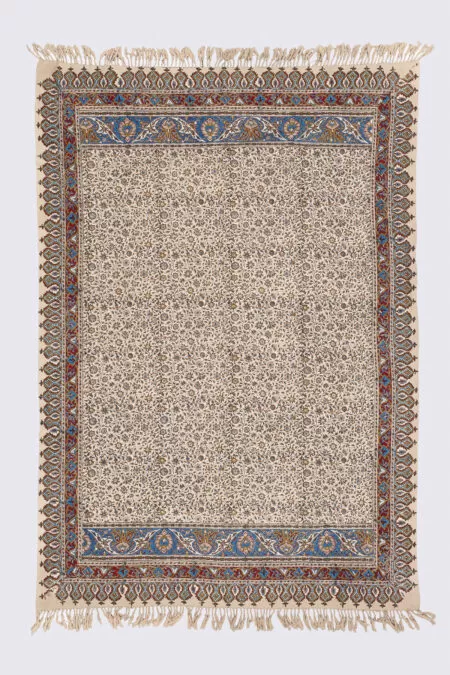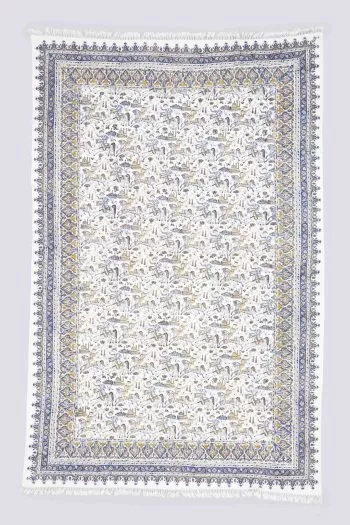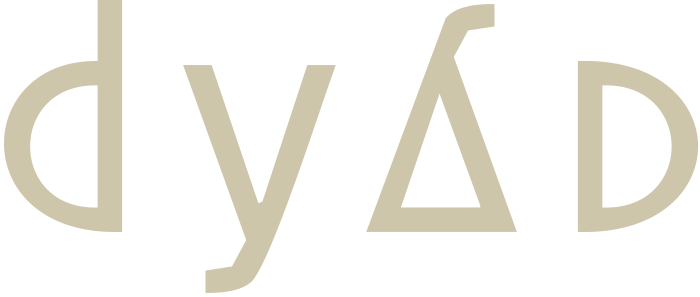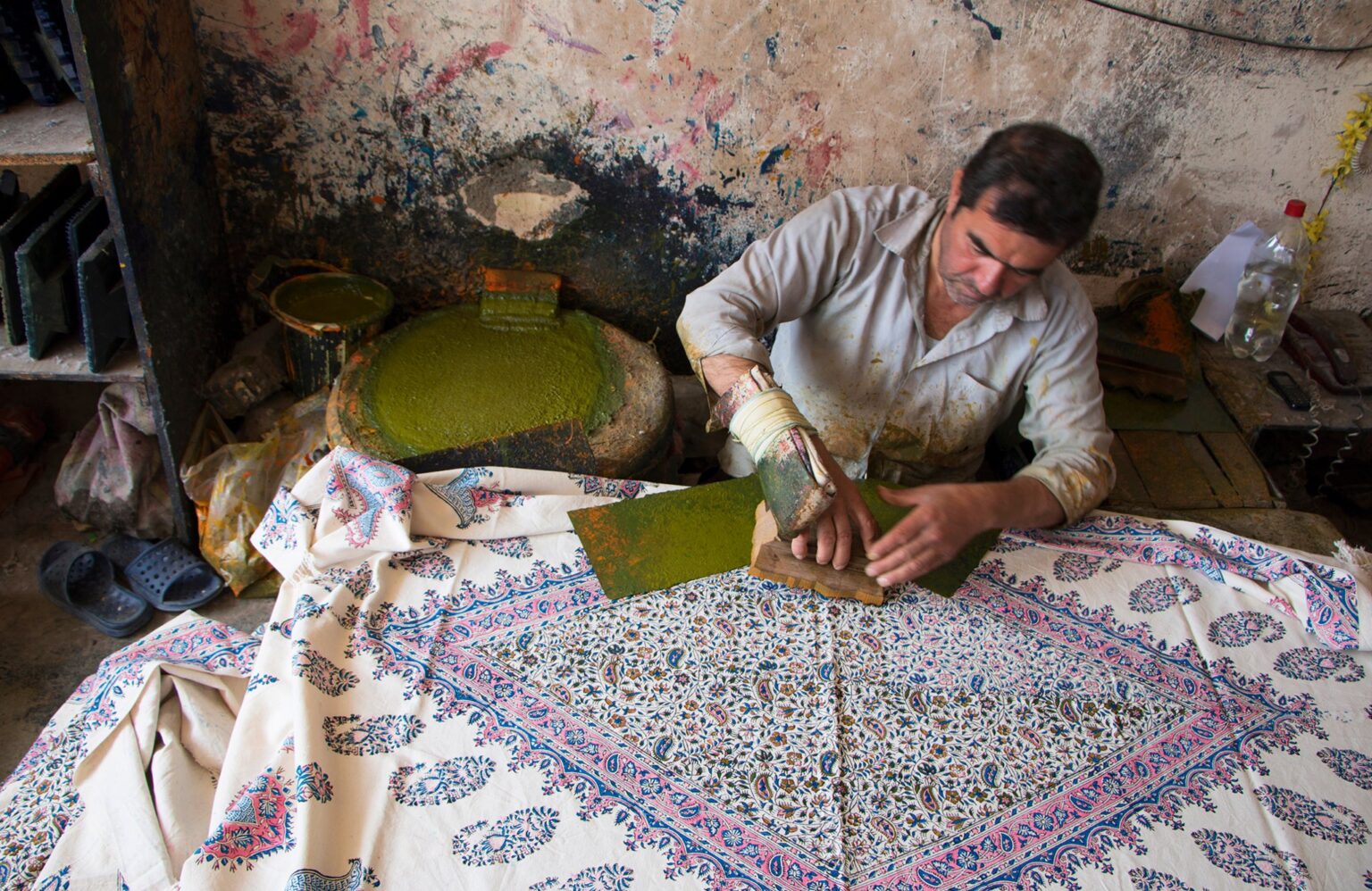
Persian Qalamkar: A Legacy of Art and Culture
Persian Qalamkar, or Persian Block Print, is a centuries-old tradition of textile printing that feels like a window into the soul of Persian culture. Growing up surrounded by these intricate fabrics, we never saw them as mere decorations—they were part of our lives, woven into celebrations, prayers, and everyday moments. The art transforms simple cotton into a canvas of colours and patterns, using hand-carved wooden stamps and natural dyes passed down through generations. To look at a Qalamkar piece is to see Persian poetry, to imagine the soft breeze in a Persian garden shaded by pomegranate trees. It’s not just artful fabric; it’s a piece of our culture, shared with the world.
A Craft Rooted in History and Tradition
The name “Qalamkar” comes from the Persian words ghalam (pen) and kar (craftsmanship), meaning “drawing with a pen.” While originally created through freehand drawing, the technique evolved to use wooden stamps carved from durable pear wood. This shift allowed artisans to meet growing demand while maintaining the precision and ability to replicate intricate patterns on a large scale.
Creating Qalamkar fabrics is a meticulous process. Artisans prepare dyes using natural ingredients like pomegranate peel and madder root. Fabrics are soaked in the river for days to remove impurities, then dyed with a pale ochre hue. Patterns are printed with wooden stamps in stages, starting with black and red, followed by washes to remove excess dye. The colours are fixed through boiling in a stabilising mixture, and the fabric is air-dried before finishing touches like tasselling or trimming.
An essential step in Qalamkar-making is gazari, or washing, which eliminates residual starch and impurities. This process begins with washing the fabric in the Zayandeh River and is followed by dyeing the fabric again using pomegranate peel, giving it a durable and light brown background hue; Some masters believe the process must be done only in that specific river because the water of Zayandeh River blesses the fabric and contains substances that help to fix colours better. Each stage reflects the passion and skill of the artisans, who approach their work with reverence for this centuries-old tradition.
Patterns That Speak
Qalamkar patterns draw inspiration from Persian culture, history, and nature. These include arabesque designs, depictions of flora and fauna, geometric motifs, hunting scenes, polo games, and verses from Persian poetry. These intricate patterns are not just visually striking, they create a deep sense of wonder and connection to Persian heritage. The rhythmic repetition of motifs and interplay of colours can evoke feelings of tranquillity and introspection, drawing you into the Eastern mythologies and emotions embedded in each design. Some textiles even feature Armenian and Hebrew inscriptions, reflecting the diverse cultural influences that have shaped this art form over the centuries.
The craft reached its zenith during the Safavid era (1501 to 1736 A.D) when Esfahan became a hub for artisans and industrialists. In this era, even most men’s and women’s clothes were made from Qalamkar fabrics. From then until now, the Isfahan region has always been the absolute centre of Qalamkars in Iran. Travelers like Pietro Della Valle noted the sophistication of Persian textile printing, describing it as “so refined and elaborate that it resembles the most beautiful embroidery.” The fabrics created during this period catered to both domestic and international markets, with designs tailored to the tastes of foreign traders. These customised designs fostered trade relationships and established Persian textiles as highly sought-after treasures in global markets.
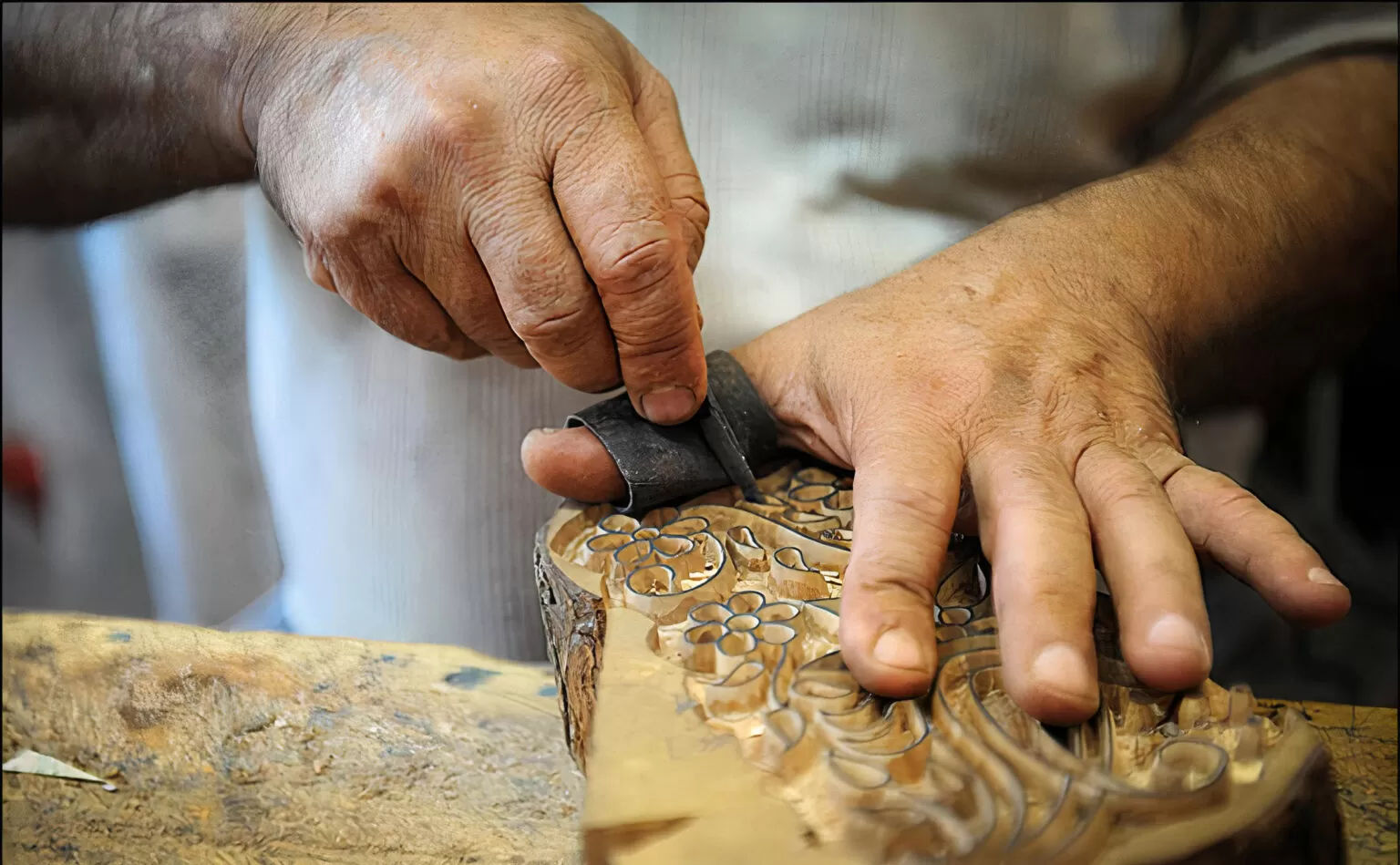
Labour of Love
Despite challenges like foreign competition and the advent of chemical dyes, Qalamkar remains an enduring symbol of Persian craftsmanship. Modern artisans continue to innovate while preserving traditional methods, creating pieces that appeal to heritage enthusiasts and contemporary audiences.
One hallmark of Qalamkar is its use of natural, eco-friendly dyes. Red and black are the primary colours, made using ingredients like rose petals, sesame oil, iron oxide, and alum. Other hues, such as cobalt blue, green, yellow, and brown, are achieved by blending herbal and mineral pigments.
Creating a single piece of Qalamkar fabric requires immense effort and precision. For example, a six-person tablecloth may involve up to 580 individual stamps, while more intricate works can exceed 4,000 impressions. Every step, from preparing the fabric to applying the final stamp, showcases the meticulous care of the artisans. Even the wooden stamps, carved with extraordinary attention to detail, are made from wood dried for years to ensure stability and precision.
From Isfahan to Melbourne
Qalamkar fabrics bring a touch of Persian elegance to any setting. They are versatile and durable, making them perfect for everyday use or special occasions. Use them as eye-catching tablecloths, runners for coffee and dining tables, or even as soft, nature-friendly mats for meditation and prayer. Their long-lasting quality and ability to withstand repeated washing make them a practical yet sophisticated choice for home décor.
In Iran, since the days of Shah Abbas, Isfahan’s iconic Qeisarieh Bazaar has been a thriving hub for an array of Qalamkar textiles and best ones still could be found there. The quality of the cloth and colours, the intricacy of motifs, and the harmony of colours distinguish the exquisite Qalamkar handicrafts.
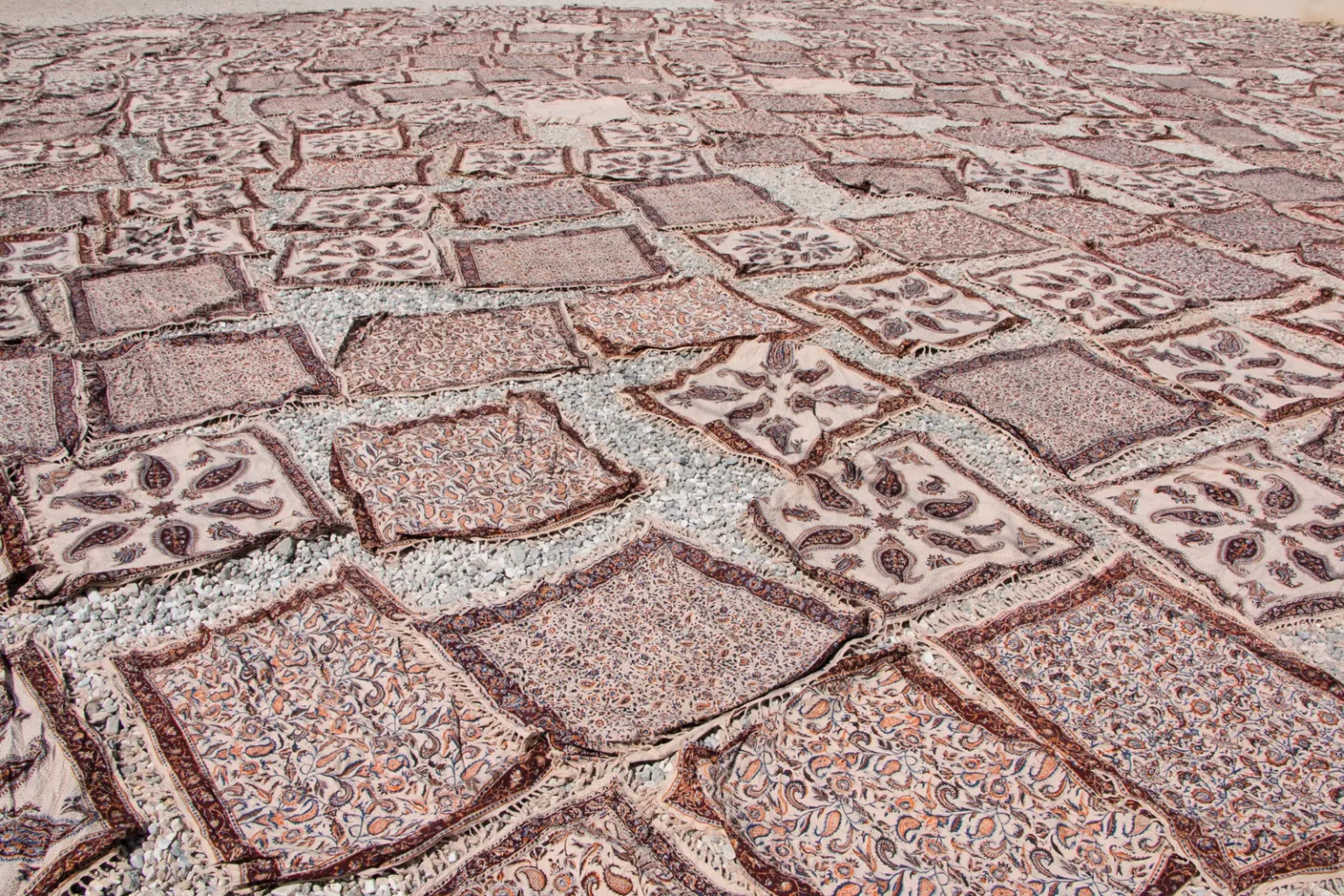
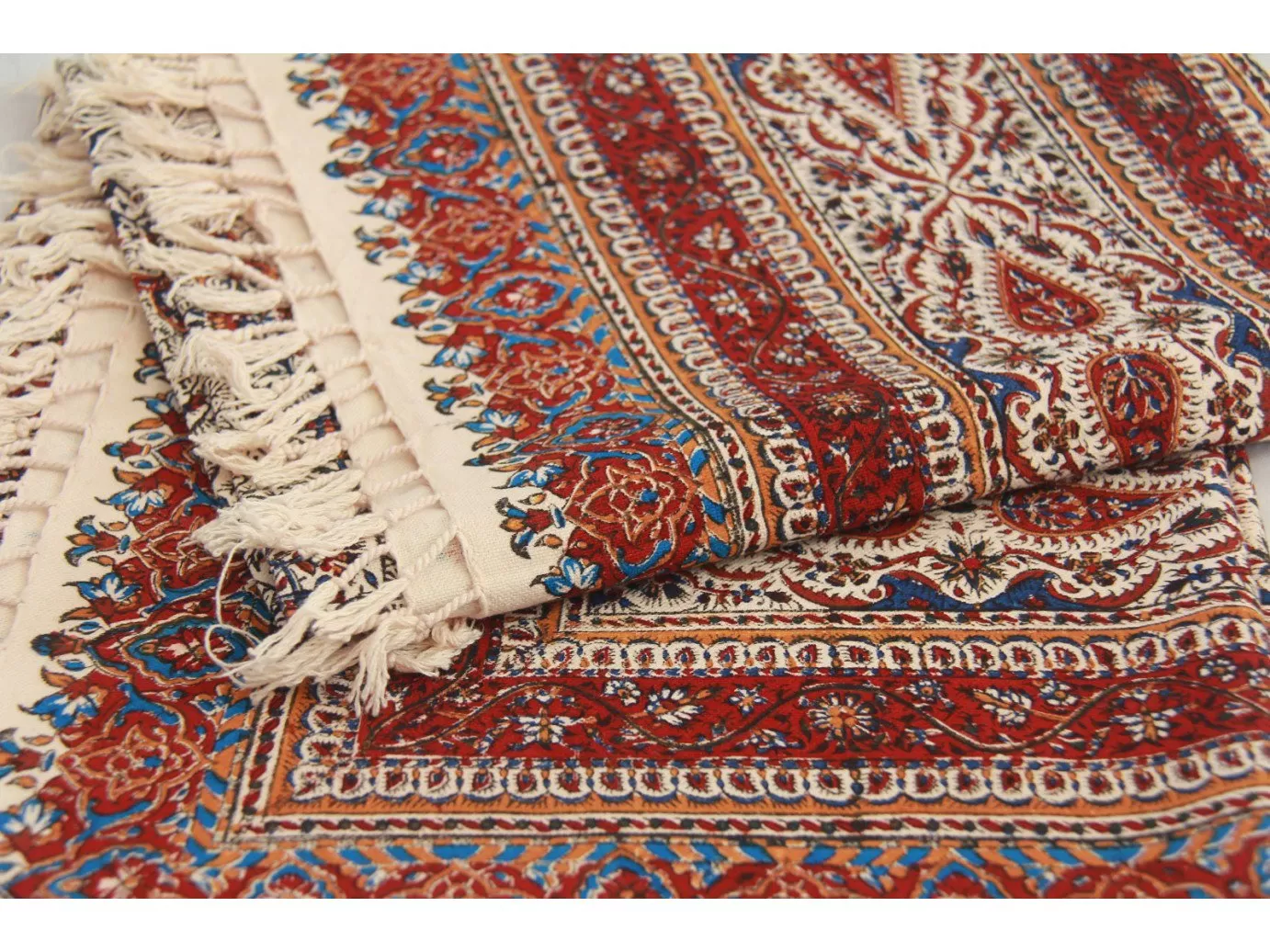
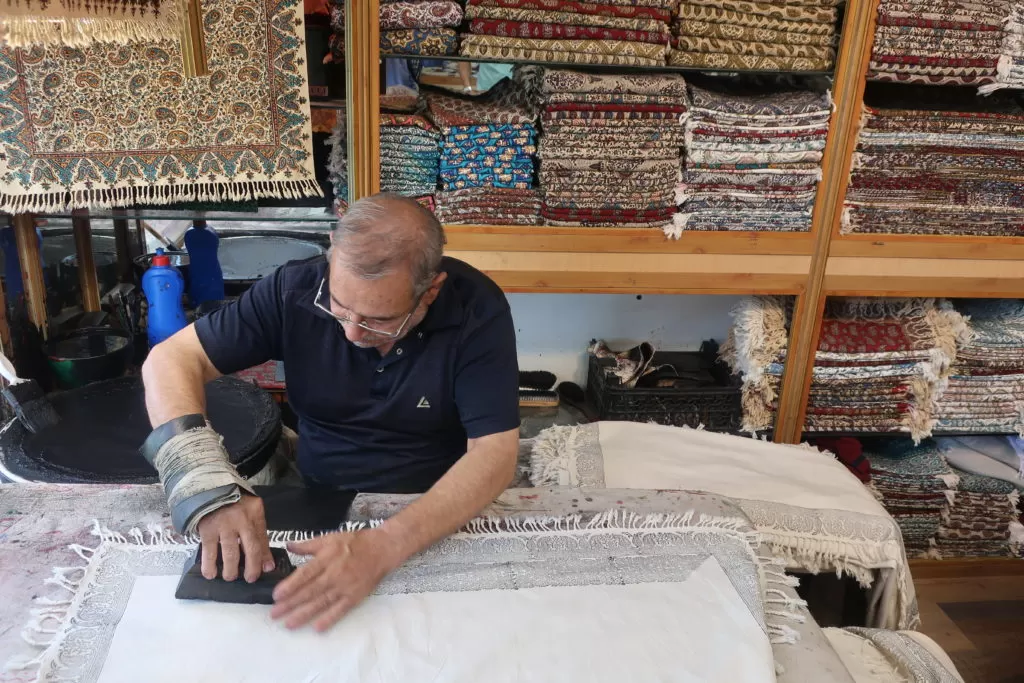
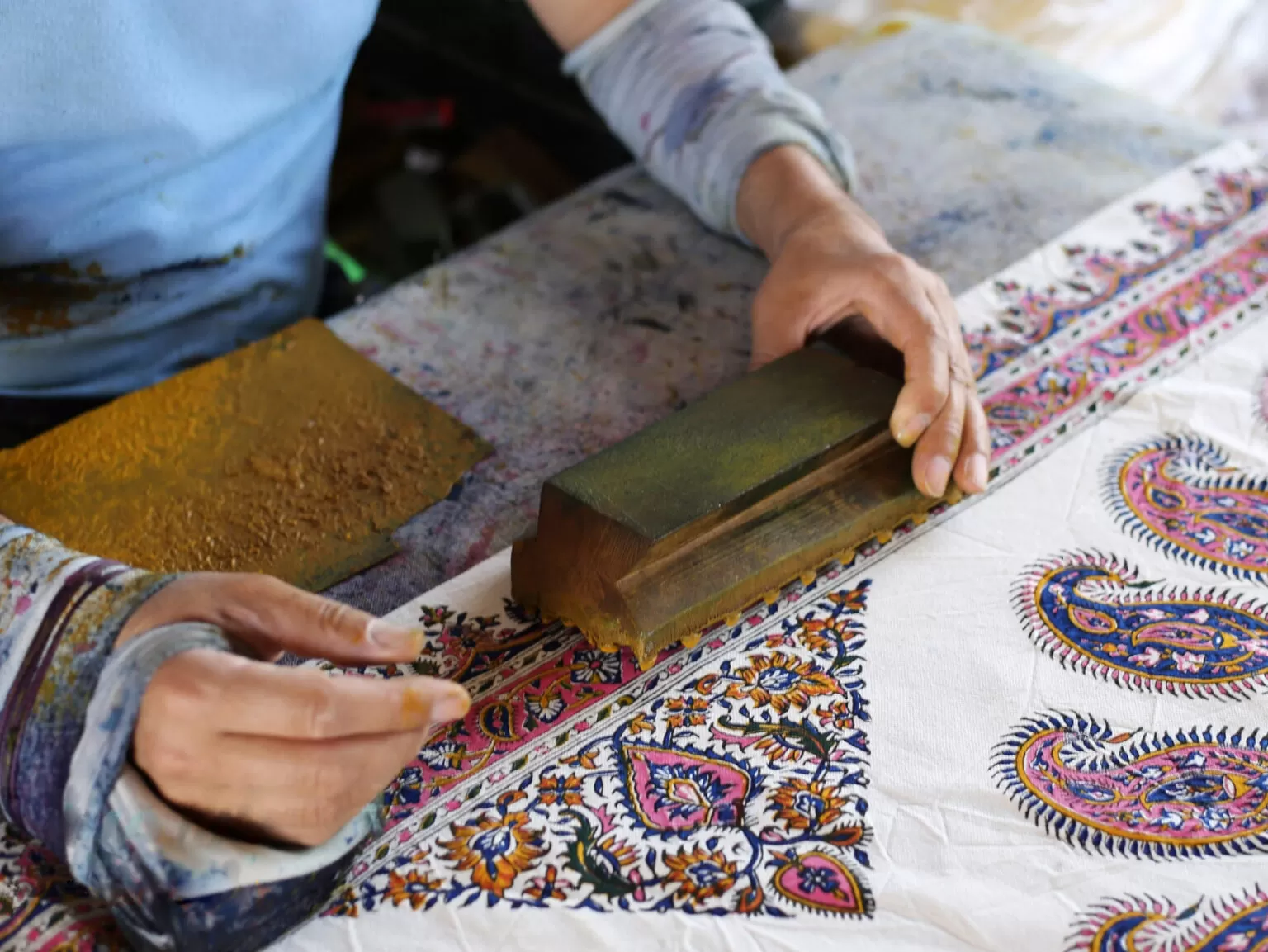
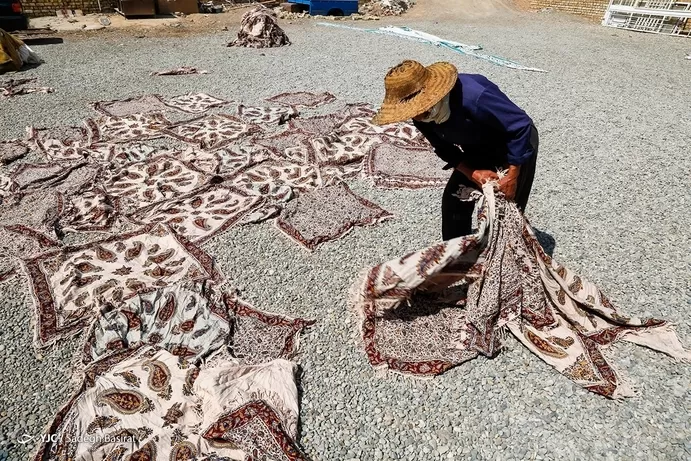
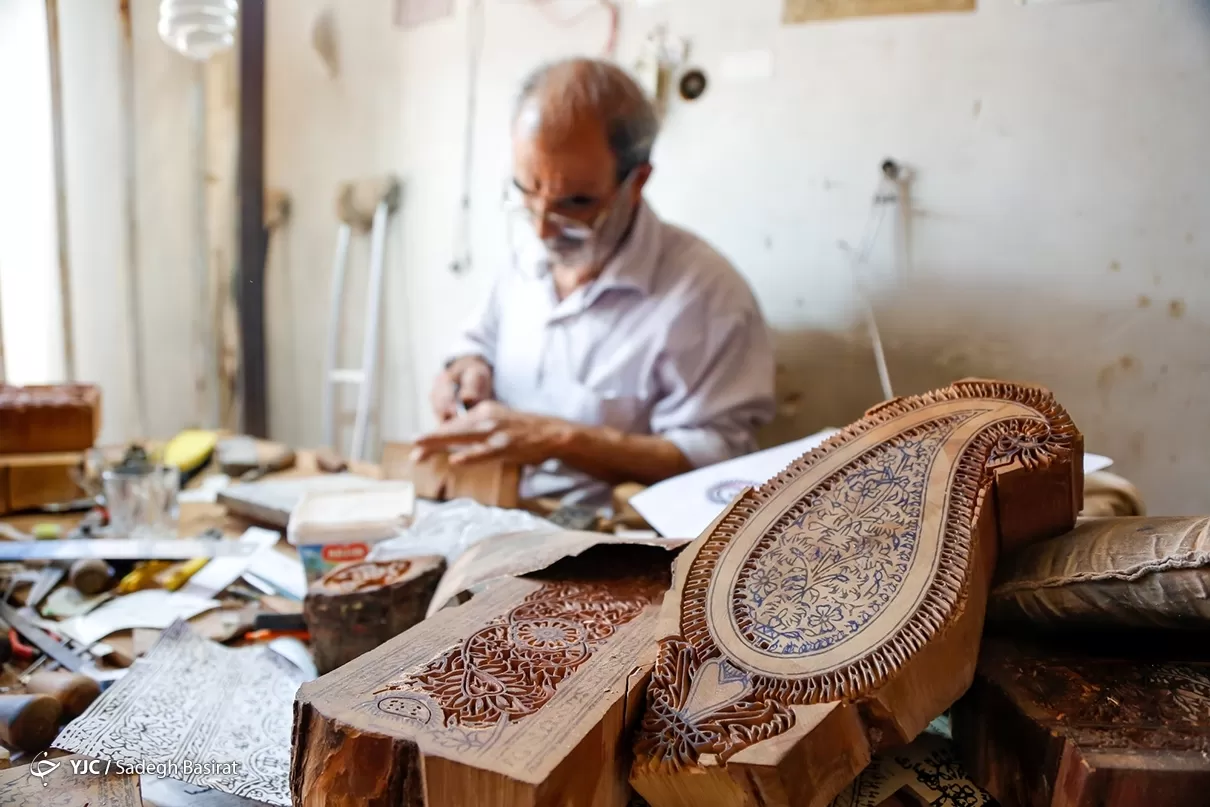
If you ever have the opportunity to visit Iran, make sure to visit the captivating city of Isfahan and explore the vibrant Qeysarieh Bazaar. However, if you can’t make the trip anytime soon, Dyad Artisans has you covered. We have curated a collection of exquisite Qalamkars fabrics, including rare antique pieces, all sourced directly from the skilled artisans of Isfahan to ensure their authenticity. We are delighted to bring this wondrous art to Australia, providing you with the convenience you deserve.
Take a look at our collection here.
As you see these exquisite creations, remember that each Persian Qalamkar carries within it a piece of Iran’s soul, waiting to grace your home with its charm.

